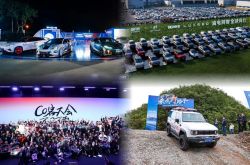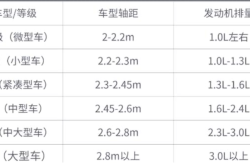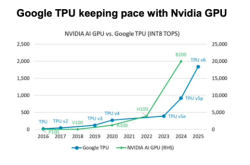Secrets of Refitting from a 2-Million-Fan Auto Expert: Achieving a Perfect Ferrari Rim Fit with This Handheld Scanner
![]() 09/26 2025
09/26 2025
![]() 508
508
What kind of vehicle design optimization sparks will emerge when an auto enthusiast teams up with a professional rim manufacturer and harnesses the power of high-precision 3D scanning technology? This article will delve into the collaboration between auto enthusiast Jean Pierre (affectionately known as JP Performance) and German rim manufacturer mbDesign. We'll explore how the ZEISS T-SCAN hawk 2 handheld 3D scanner plays a pivotal role in optimizing the wheel covers and rims of the Ferrari F12 Berlinetta.

I. Collaboration Background: Design-Centric Approach for Dual Excellence in Aesthetics and Performance
Jean Pierre, or JP Performance as he's widely recognized, is a prominent figure in Germany's automotive landscape. Not only does he enjoy immense popularity on German television, but his YouTube channel, "JP Performance," has also amassed over 2 million subscribers. His innovative and professional automotive content has captivated audiences far and wide. On the other hand, mbDesign stands out as an expert in customized rim design and manufacturing. Its founder, Markus Brandt, boasts over 20 years of experience in wheel prototype fabrication. He has the ability to craft novel and unique rim products with precision, tailored to customer specifications.
During this particular collaboration, we accompanied Jean Pierre on his visit to mbDesign. The core objective was to optimize the rims for the Ferrari F12 Berlinetta, guided by JP's design philosophy. This philosophy aims to enhance the vehicle's sporty aesthetics through diverse design schemes while ensuring a precise fit between the rims and the body. The ultimate goal was to strike an optimal balance between appearance and performance, with the ZEISS T-SCAN hawk 2 3D scanner serving as the key to achieving this.

II. Core Mission: 3D Scanning as the Enabler for Wheel Cover and Rim Optimization, with Precision as the Cornerstone
In the realm of vehicle modification, especially rim customization, achieving a "precise fit" is an unwavering requirement. It ensures that the new rims seamlessly match the body dimensions of the Ferrari F12 Berlinetta. Additionally, scanning the wheel covers is crucial to detect any wear that could compromise the vehicle's aesthetics and driving safety. The decision to conduct 3D scanning of the Ferrari's wheel covers was primarily driven by two core needs:
1. mbDesign, as a rim manufacturer, lacked precise data for the Ferrari F12 Berlinetta model. This absence of data posed a significant obstacle to direct customization design.
2. Scanning was essential to acquire three-dimensional data of the wheel covers. This data would then be used to generate digital models, providing a solid foundation for subsequent rim fit design and manufacturing.
Scanning Process: Simple, Efficient, and Highly Accurate
The operation process of the ZEISS T-SCAN hawk 2 is incredibly user-friendly, requiring only two straightforward steps to complete data acquisition:
1. Pre-preparation: A small number of reference points are affixed to the scanning area of the wheel cover. These reference points act as the "benchmark coordinates" for the scanner to accurately locate data.
2. On-site scanning: The scanner is handheld, allowing for easy scanning of the entire wheel cover. With its ultra-high precision of 0.02mm, it captures even the most minute details on the wheel cover surface, such as subtle wear and dimensional deviations. Its handheld design offers exceptional on-site flexibility, enabling it to adapt to various scanning angles without the need for complex fixation. In just a few minutes, it can fully collect all key dimensions of the wheel suspension and wheel cover.
The resulting "digital twin" model of the wheel cover provides precise and reliable foundational data for subsequent personalized rim design and adjustments. This effectively eliminates the problem of "design mismatching with reality" from the outset.

III. Mutual Benefits: The Three Core Advantages of the ZEISS T-SCAN hawk 2 for Enthusiasts and Manufacturers
For Jean Pierre and mbDesign, the appeal of the ZEISS T-SCAN hawk 2 extends beyond its "high precision." Its "ease of use" and "efficiency" are equally compelling, with three key characteristics earning praise from both modification enthusiasts and manufacturers:
1. Intuitive and Simple Operation: There's no need to rely on a separate laptop for operation. Scanning can be quickly initiated with just a remote control button, making it accessible even to non-professional technicians.
2. Efficient and Precise Scanning: With a precision of 0.02mm, it captures intricate details and completes scanning of key components within minutes. This significantly shortens the data acquisition time in the early design phase.
3. Instantly Usable Data: Upon completion of scanning, a digital twin model is immediately generated. This eliminates the need for additional data processing delays, allowing the data to be directly used in subsequent design work.
IV. Data Application: From Scanning to Design, ZEISS Software Provides a Precise Basis
The data acquired through scanning is far from a "one-time use" item. In the ZEISS Quality Suite inspection software, all details of the wheel cover are clearly accessible. Design teams can directly draw rim blueprints based on this precise data, ensuring that every dimension of the rim perfectly matches the wheel cover and body. This thoroughly resolves the industry pain point of "design disconnecting from reality."


V. Extended Applications: Unlocking More Possibilities for 3D Scanning in the Automotive Industry
Beyond rim and wheel cover optimization, Markus Brandt also shared other core application scenarios of the ZEISS T-SCAN hawk 2 at mbDesign. These scenarios highlight the broad potential of 3D scanning technology in the automotive industry:
1. Post-Manufacturing Quality Control: By scanning original and processed wheels and comparing their three-dimensional data (including surface details and dimensional deviations), quality issues such as dimensional errors and surface flaws in the rims can be quickly detected. This ensures a high pass rate for outgoing products.
2. Reverse Engineering of Old Wheels: For old wheels without original CAD data, complete three-dimensional data can be acquired through 3D scanning. This data can then be combined with reverse engineering software to reconstruct the wheel model, enabling modification and replication of old components.
3. Brake Data Acquisition: In brake research and development or maintenance, scanning brake components and collecting three-dimensional data provides crucial data support for brake performance optimization and fault troubleshooting.
Through the collaboration case between JP Performance and mbDesign, it's evident that 3D scanning technology has become a "core tool" in automotive design and modification. It not only addresses pain points such as "data scarcity" and "insufficient precision" but also expands diverse application scenarios like reverse engineering and quality inspection for the industry. High-precision, highly flexible handheld scanners like the ZEISS T-SCAN hawk 2 continue to empower innovative design and efficient production in the automotive sector.







